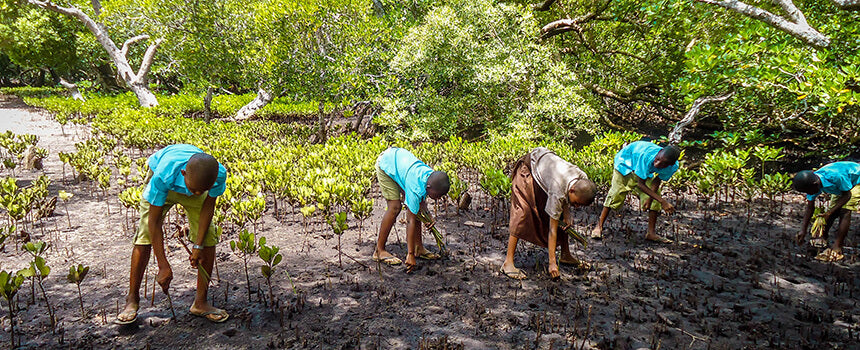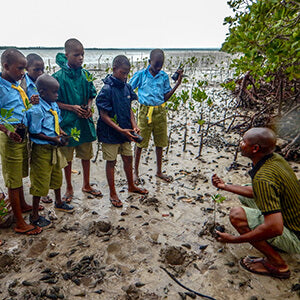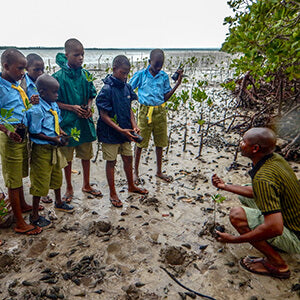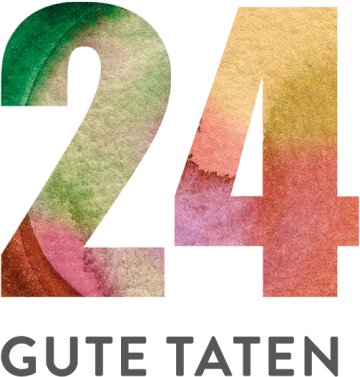Day 22
A mangrove seedling is planted on Kenya's coast
 Mangrove forests: habitat between land and sea
Mangrove forests: habitat between land and sea


Protection and reforestation of valuable mangrove forests on the coast of Kenya

need
Sustainable reforestation of mangrove forests to preserve an endangered ecosystem in Kenya.
activity
Under the guidance of project staff, school classes plant native mangrove seedlings that were grown in the project's own tree nursery.
Measurable performance
Number of seeds and saplings planted through the good deed.
Result
Destroyed mangrove forests are reforested and provide valuable services to people and animals as habitat, food source and coastal protection.
Systemically relevant impact
The local population is made aware of the value of mangrove forests and is committed to protecting the mangroves.
background


The good deed
AboutKenya

Nairobi
Capital city
48 461 600
Population
1 516
Gross domestic product
per capita per year

146
Human Development Index
(Human Development Index)



